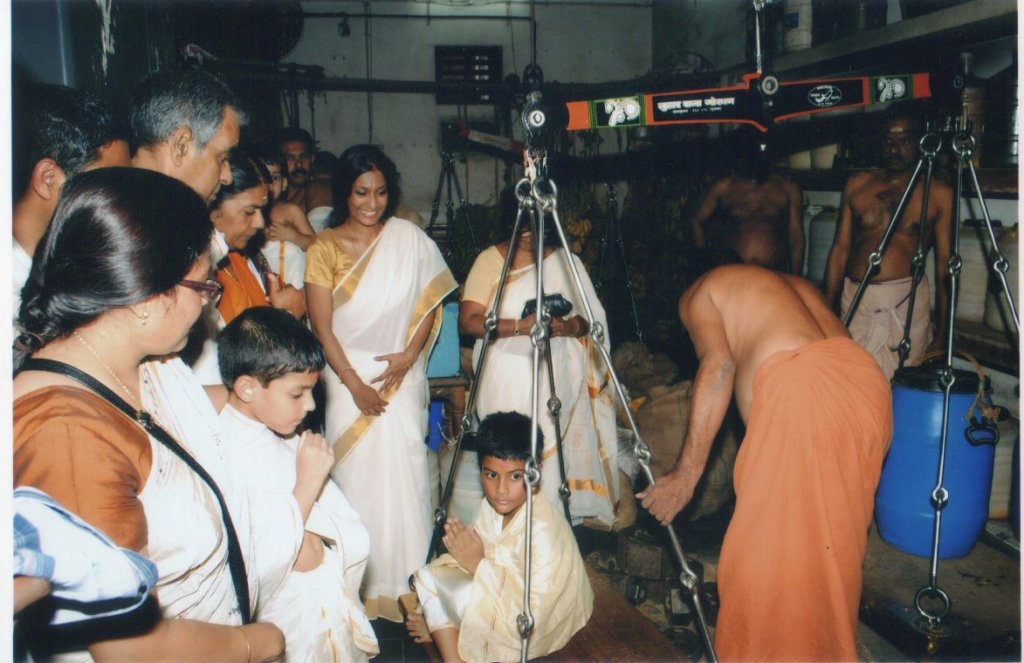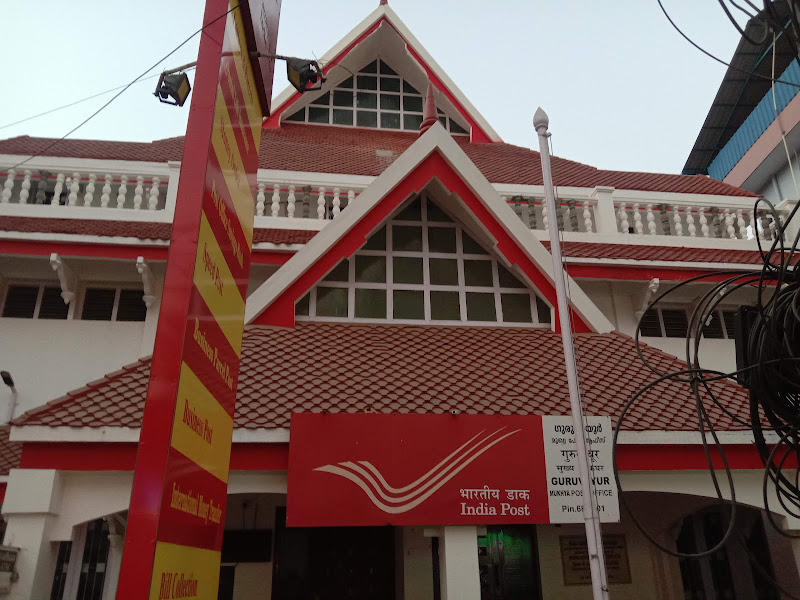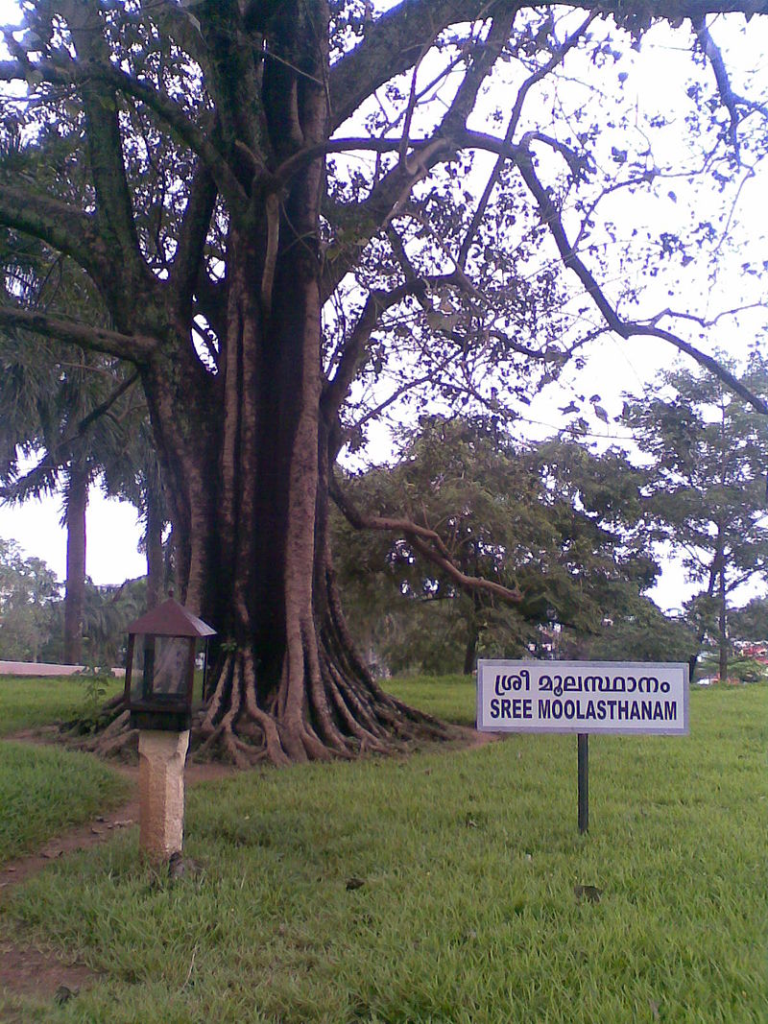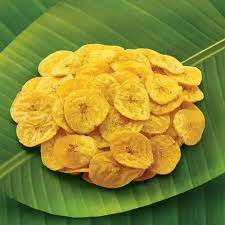In the five decades (plus!) of my life, I have had the good fortune of getting the darshan of Guruvayurappan many times. As we approach the end of the year, I wanted to write about this wonderful, and powerful temple on this website, as we had the good fortune of travelling earlier this year in the month of February.
We typically drive from taking the following route.
Bangalore – Salem – Tirupur – Palakkad – Thrissur- Guruvayur.

10 hours via NH 44 and NH 544

Guruvayurappan Temple: They call it ‘Bhulokam Vaikuntam’- or Heaven on Earth, and this is with a reason, as the legend that goes with the temple can give anyone goosebumps.
Legend & History: The presiding deity of the temple is Lord Vishnu in his Krishna avatar – and is known fondly as ‘Guruvayurappan’. This name is associated with the following legend. It is said that the idol is over 5000 years old and is made from a rare material called ‘Pathala Anjana Sila‘, and the idol was given to Lord Brahma by Lord Vishnu himself. The idol was gifted subsequently to Sage Sutapa (one of the sapta rishis) and his wife Prishni, and they were blessed and also promised that Lord Vishnu would be born as their son in three lifetimes. Hence, the Lord was born to them as Prishnigarbha.
The idol then came to Kashyapa Prajapati (another sapta rishi) and his wife Aditi, who were incarnations of Sutapa and Prishni and Lord Vamana (an avatar of Lord Vishnu) was born to them. The idol finally came to Vasudeva, the father of Lord Krishna in Dwapara Yuga. It was this idol that was worshipped by both Vasudeva and Krishna’s mother Devaki.
Just before Lord Krishna planned to give up his mortal body at Dwaraka (Gujarat), he told his minister and his principal devotee Uddhava, to hand over the idol to Brihaspati, Guru of the Devas (Jupiter), so that it may be installed at a suitable place and worshipped during Kaliyuga. Dwarka was then submerged, but Brihaspati along with his disciple Vayu ( the god of wind) recovered the idol. As they contemplated in identifying a suitable place, they met Lord Parasurama, the son of Sage Jamadagni and Renuka ( also an avatar of Lord Vishnu), who led them to a beautiful and verdant spot by a lake. ( Author’s note: I can’t help revel in this beautiful leela or ‘divine play’, where an avatar of the Lord of the Universe leads the way to install His own idol that was handed down by another of his avatar).
It was at this spot that Lord Shiva and Goddess Parvati were meditating at that time, and they welcomed the installation of the divine idol at the spot. Hence, the place came to be known as Guruvayur (the amalgam of Guru and Vayu- who were responsible for the installation of the idol) and the Lord was known as Guruvayurappan. Vishwakarma, the architect of the Gods, built the Sri Krishna temple at the instance of Guru and Vayu. Lord Shiva and Parvati then moved to the other bank of the lake and settled to meditate at Mammiyur. It is said that one must visit Mammiyur and only then is the pilgrimage considered complete.

The idol in Guruvayur is represented as Lord Vishnu in his chaturbhujam (four arms) form with his shankha Panchajanya (conch), Sudarshan Chakra (disc), the gada Kaumodaki (mace) and a lotus with a tulsi garland – and this was the image that the Lord revealed himself to Vasudeva and Devaki before He was born to them. The temple has sannidhis for Lord Ganesha, Lord Ayyappa and Devi Bhagavathi too. The worship is done as per the rituals and methods prescribed by Adi Shankaracharya and the tantric way as prescribed by the Chennas Narayanan Nambudiris, who are hereditary tantris or priests of the temple. The temple is governed by the Guruvayur Devaswom Board, which is under the Government of Kerala.

The idol in Guruvayur is represented as Lord Vishnu in his chaturbhujam (four arms) form with his shankha Panchajanya (conch), Sudarshan Chakra (disc), the gada Kaumodaki (mace) and a lotus with a tulsi garland – and this was the image that the Lord revealed himself to Vasudeva and Devaki before He was born to them. The temple has sannidhis for Lord Ganesha, Lord Ayyappa and Devi Bhagavathi too. The worship is done as per the rituals and methods prescribed by Adi Shankaracharya and the tantric way as prescribed by the Chennas Narayanan Nambudiris, who are hereditary tantris or priests of the temple. The temple is governed by the Guruvayur Devaswom Board, which is under the Government of Kerala.


The glory of the temple of Guruvayur has been described by many saints, particularly by Vilwamangalam Swamiyar, Kurooramma, Poonthanam Namboodiri, Mana Vikrama Raja and Melppathoor Narayana Bhattathiri, who lived in the 16th and 17th century AD. Infact the Narayaniyam, the summary study of the Srimad Bhagavatham with 1036 verses, was composed by Melppathoor Narayana Bhattathiri (1560-1666).
In an earlier piece, I had mentioned the instance of King Janamajeya. As the popular anecdote (Narada Purana) that precedes Srimad Bhagvatham mentions that Raja Parikshit, (grandson of the Pandava Arjuna), was cursed by Rishi Shameeka’s son Shrungi, that he would die due to a snake bite. Janamajeya wanted to eradicate all the snakes in the kingdom that could be a potential threat for his father- which he did. This act had repercussions, and Janmajeya was afflicted with leprosy. It was Sage Dattatreya, the son of sage Atri who advised him to take refuge at the feet of the Lord at Gurvayur, and after months of devotional service to the Lord, King Janamajeya was finally cured of his affliction.
Historically, the temple suffered greatly when India was colonised. In 1760 the Dutch looted Guruvayur and looted the treasures that included the gold plate that covered the flagstaff and set fire to the temple. In 1766, Hyder Ali of Mysore captured Kozhikkode (Calicut) and then Guruvayur and demanded 10,000 fanams (the currency prevalent then) as ransom to spare the temple. Later, in 1789 CE, Tippu Sultan invaded the province and destroyed the smaller shrines and set fire to the temple, but due to what can be presumed as a divine intervention, it started to rain heavily and the fire was extinguished.
Our Darshan this year (Feb 2022): We first visited the Ganapati Temple just outside the sanctum after keeping our footwear in the stand that is available. We also need to deposit any bulky bags, electronic items, leather belts at the same place as these are not allowed inside. Women are expected to be on sarees and men are supposed to wear Dhoti/ Veshti/ Mundu with or without angavastram (shawl). Our friend Mr. Babu, a resident of Guruvayur accompanied us. We had the most blessed darshan and were also witness to the beating of the drums or the Chenda Melam. The Chenda is used as a percussion instrument for almost all Kerala art forms like Kathakali, Kodiyattam, Theyyam etc.


What we wore!
Devotees also undertake vows of thulabharam here in the temple, which is an ancient Hindu practice in which a person is weighed against a commodity (such as gold, grain, fruits or other objects), and the equivalent weight of that commodity is offered as donation.

Picture Courtesy: Mrs. Geetha Anand
The annual Guruvayur festival or Guruvayur Ulsavam is celebrated in the Malayalam month of Kumbha (February-March). The 10-day festival Arattu festival starts with Kodiyettam (hoisting of the temple flag) on the Pushya nakshatra of the month. It starts with an elephant race (Anayottam) and the winning elephant has the honour of carrying the Thidambu (the idol of Guruvayurappan). The 10 days witnesses a lot of festivities, music, Kathakali performances, rituals, and the 10th day is known as Guruvayur Arattu, when the Lord’s idol is taken in a procession to the Rudratheertha (the lake). Devotees also take a dip in the lake in the hope of washing off their sins. After the Arattu, the idol is taken again on the elephant, where the circumambulate the temple 11 times and taken back into the sanctum sanctorum. The flag is lowered marking the end of the festivities. Other festivals that are observed are the Guruvayur Ekadasi in December; Narayaneeyam Day) in the honour of Saint Melppathoor Narayana Bhattathiri) on December 14th; Poonthanam Day in March; Kuchela Dinam (in honour of Krishna’s best friend Sudama also known as Kuchela) in December -January (Dhanurmasa)
The temple schedule begins at 3 am with Nirmalayamdarshan (viewing the Deity), followed by Abhisheka. Temple is closed between 1 and 4:30 pm.
Mammiyur Temple: We then visited the Mammiyur Shiva temple which is 200 metres north west to the Guruvayoor Sree Krishna Temple. I have already described the significance of this temple earlier. This temple is managed by the Malabar Devaswom Board and Puzhakkara Chennas Mana family is the hereditary Thanthri of this temple. Lord Shiva is the main deity and is with Parvati on his left.







The town of Guruvayur: The Guruvayur town activities revolves around the temple and you find beautiful artefacts, Krishna idols, sweets and savouries and fresh fruits and flowers. I also bought a cute Kasavu pavadai (skirt and top) for my little niece. We stayed overnight at the Krishna Inn, Guruvayur and it is comfortable, neat, clean and very close to the temple.







Vadakkunnathan temple: The next day, after staying overnight at the Krishna Inn, we drove back to Thrissur to pay a visit and obeisance to the Vadakkunathan Temple. This is one of the largest Nambudri temples. Indeed Thrissur- the town is an abbreviation of ‘Tiru-Shiva Perur’ – the town with the name of Lord Shiva.


Before I describe the temple, I would like to introduce readers to the Nambudris, from research done from the book ‘ A Global History of Architecture’ by Mark M Jarzombek and Vikramaditya Prakash. While geographically, the Western Ghats slice off the coastal region of Kerala, it was under the shadows of political powers of peninsular India, such as the Pallavas and Cholas. In the 12th century A D, with the decline of Cholas, Kerala broke into smaller kingdoms and principalities dominated by Brahmins called Nambudris. They maintained their cultural domination and were given the place of honour to perform worship at the Shiva and Vishnu temples and were called Yogiatiripppads. The Vadukkunathan Temple is one such temple.
The temple is in the heart of Thrissur and is surrounded by nine acres of forest area. The sacred area is defined by a rectangular enclosure. A secondary colonnade creates a circumambulatory region around the inner edge of the temple precinct. The three main entrances are from the west and are aligned with the temple’s three main shrines. The entrance farthest to the north is dedicated to Shiva, the one in the south is dedicated to Lord Vishnu’s avatara as Ram and the shrine in the middle is dedicacted to Shankar-Narayana – the combined form of Vishnu and Shiva – a form unique to Kerala. Although the garba griha is made of stone, the outer roofs are known for their beautiful wooden structures. Mural paintings depicting various scenes from the Mahabharata can be seen inside the temple.


Adi Shankaracharya is believed to have been born (788 AD) to Shivaguru and Aryamba of Kalady (you can find the travelogue here), after they prayed to Lord Vadukkanathan and his amsavatara was born to the devout couple. There is a shrine for Adishankaracharya in the outer precinct too.
It is said that all the idols in the three shrines were installed by Parasurama. The story that is described in the Brahmanda Purana says that after he exterminated kshatriyas for 21 cycles, he wanted to cleanse his karma, meditate and settle down in an new place. The Lord of the oceans Varuna, gave him a winnow and asked him to toss it in the ocean. As he did that, a new place of land emerged which is supposed to be the present day Kerala. Another version says that he hurled his axe into the ocean.
The legend goes on to say that he meditated upon Lord Shiva that he should manifest Himself there. But when he opened his eyes what he saw was the image of the four-armed MahaVishnu with the conch, the disc, the mace and the lotus. This is now worshipped as Rama. He continued his meditation and the idol of Shankar-Narayana (that Shiva and Vishnu) manifested. He realised that God was indeed one- whether we worship him in any form. Ekam sat viprah bahudhah vadanti-The reality is one, we call Him by many names. Lord Shiva finally manifested himself as a lingam at a spot – which is marked as ‘Moolasthanam’. It was later shifted to the present shrine by the King of Kochi.
There are sannidhis for Krishna, Parasurama, Simhodara, Ayyappan , Vettekkaran (Shiva in the form of a hunter), Naga devathas(Serpent deities), Nandikeshwara and Adi Shankara. Outside the main temple, are the sannidhis of Lord Subrahmanya and Lord Ganapathi.


The temple is famous for the annual Pooram festival, which was introduced in the 18th century, an event that combines elephant pageantry with the frenzied beating of drums and cymbals. Thekkinkadu Maidan, encircling the Vadakkunathan Temple, is the main venue of the renowned Thrissur Pooram festival.
Wanted to share this beautiful depiction of the Pooram festival – a hand-painted on a cotton Kerala Kasavu Saree by Roshni Suresh. You can find her here @artfromheartbyroshnisuresh

Thiruvambaddi Sri Krishna Temple: We also went past the Thiruvambaddi Sri Krishna Temple that has the shrines of Unnikrishna (Krishna as a child) and Goddess Bhagavathy. It is just a kilometre from the Vaddukkanathan Temple and now synonymous to the general public with the Pooram festival.
Lord Ganesha, Dharmasastha and the founders of the temple are worshipped in separate shrines outside the Nalambalam. Deities known by Dravidian names – Kukshi Ayyapa, Manikanda, Ghandakarna, Raktheswari and Bhairava are also enshrined here, just outside the walls of the temple.

Our last stop was to buy the famous Kerala banana chips that is fried in coconut oil! We couldn’t possibly get back home empty handed 🙂


Where we stayed

Places nearby:
- Elephant Camp Sanctuary
- Chavakkad Beach
- Sri Parthasarathy Temple
- Punnathur Kota
- Chowallur Shiva Temple
- Institute of Mural Paintings
Pingback: World Toilet Day 2022 Special – Highway Sanitation ©Sangeeta Venkatesh | sojourn-with-san